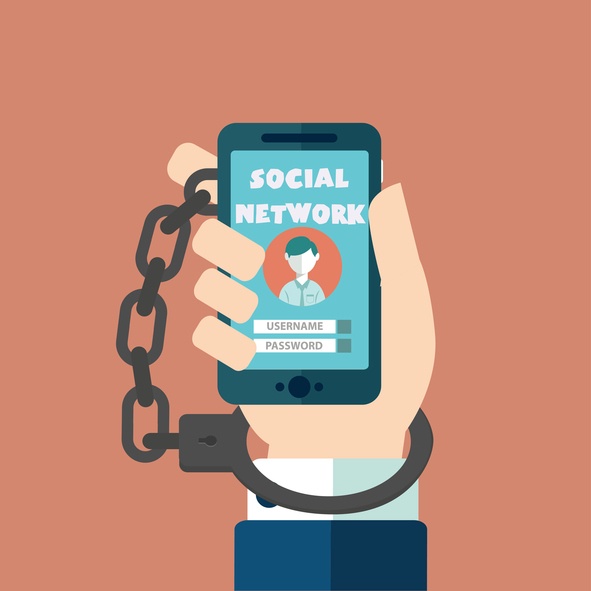This is a post for retailers with physical stores competing with online shopping and technology that threatens their sales.
Yes, it has been a year of chaos, but the pandemic in the U.S. is receding.
That still doesn’t mean you can go back to exactly what you did before … especially if it wasn’t working.
In some ways, the pandemic has been a gift.
It forced businesses to evolve their operations, update their websites, payment capabilities, and more.
We all cope with a world spinning out of control by controlling our own environments as much as we can.
Our collection of followers, the pictures we curate to show we’re having a great time, and the people we text are all filtered versions of ourselves.
We like to believe we don’t need anyone. We’re self-sufficient and smart. I can do it myself and better.
Many of us, when dealing with the stresses of everyday life, turn to our smartphones to make us feel we are loved.
Research shows the chemical dopamine that is released when we get a text on a smartphone gives us the same feeling as gambling or drinking.

Our focus on getting ahead and staying current means staying connected to social media platforms.
Even with many followers, some people can’t rely on their friends because they know their friends will blow them off if something better comes along.
This has left many employees as well as shoppers adrift with the illusion of connection.
The trouble is that we’re growing more addicted to that dopamine rush of a text message or a thumbs up.
This is why we do more and more of it – we’re all addicted.
So of course technology is telling retailers to go where shoppers have had to spend more of their time because of the pandemic – on their phones.
Yet those smartphones can’t deliver the human connection that shoppers crave. And with lockdowns abating across the world, it is that human connection that brick and mortar retailers can use to combat online retailers and add meaning for many shoppers.
How?
Through your retail sales training and customer service, your way of treating shoppers shows your commitment to the human-ness of making a connection. It may not change the world, but it just might make someone’s life better, even if only for a few minutes. And that’s enough to get them to want to make a purchase from you.
In those few minutes in your store, someone talked to them, engaged them, and they purchased something to make their lives more convenient or meaningful.
Not only did they walk away with something tangible just for them, but they also left with a feeling that makes them want to return soon…to have the same exceptional shopping experience.
Now I know there are those who tout a coming world devoid of physical stores, associates, and malls. Their bleak future is filled with a different set of gloves and glasses to let you immerse yourself in a virtual world while still within your own home.
A virtual world where almost everything is fake, from the assistance you get via Artificial Intelligence (AI) to the 3D printed products delivered from autonomous vehicles.
A world where brand recommendations have less value than Siri or Alexa.
An always-connected world through our clothing, our cars, and even our bodies.
But that flies in the face of a basic need of shoppers: human connection.
Research confirms that human connection lies at the heart of human well-being. Knowing you’re valued and a contributing member of society from another person is incredibly reaffirming.
An article in the NYT concludes, “It’s up to all of us — doctors, patients, neighborhoods and communities — to maintain bonds where they’re fading, and create ones where they haven’t existed.”
But those connections take time. And every interaction we have in public either confirms or denies our personal value.
Now that masks are optional to non-existent, we have to double down on our interpersonal skills.
That’s why brick and mortar stores are so important to our mental health right now…
When we go shopping, beyond an unconscious need to connect with another human being, we’re also looking for someone to remove frustration from our lives.
We’re looking for someone to take over responsibility for an issue, a product, or a service we need and fix it.
We like to feel we are in good hands.
That’s why people still go to physical retail stores.
And will for the foreseeable future…
Retail sales builds one person at a time. Do it right and you form a relationship that lasts with your client.
Do it wrong and you miss your chance.
Shoppers are looking for someone to be responsible for their happiness when they drive to your shop. Welcome that challenge!
Three Tips How You Can Make Your Brick and Mortar Store Stronger:
1. Constantly be looking at your store traffic flow. Where do shoppers go from the moment they walk in, until the moment they walk out? Do they turn around 10 feet in after giving your store a once-over? It’s probably because you unconsciously created a barrier. Where are your most profitable items located? The reality is you can move almost any store around – yes, even the fixtures – if you’re committed to constantly making your environment more exciting and in tune with your shoppers. Remember physical retail exists to answer a shopper’s one question, “What’s new?” Make sure your store – especially after the pandemic looks and smells fresh.
2. Always be upgrading your sales staff. Are you afraid to fire longtime employees whom you hired to engage but can’t sell? How can you re-engage them to understand the party’s in the aisles, not behind the counter? What additional training are you giving them on how to sell in the midst of an always-on consumer? What processes should be in place for how you want a customer to receive an exceptional experience? How are you measuring it against those standards? When you are slammed with revenge-pandemic shoppers, it is easy to tell yourself you don’t have to worry about those things. Until one day, you aren’t and you’re struggling.
3. Have fun with your marketing. When your marketing includes humor and can position you as the angel to a competitor’s devil, it gives your brand a personality. I did this with one of my first clients, read about this marketing success story.
Consider how you can make jokes about online retailers delivering something late, something the wrong size, and with the hassle of boxing up returns versus your well-appointed fitting rooms where if a customer doesn’t like it, you put it back for them, your displays with items they can touch, feel and use – you get the point.
Good relationships, like eating well and getting enough exercise, aren’t just a matter of luck.
And…
Expecting employees to magically create rewarding interactions with no selling process on your sales floor is delusional.
Managers share the blame for not creating a great customer satisfaction experience because they are frequently focused on tasks and rarely steer employees to the important goal of developing their rapport-building skills.
You need to provide associates the skills to forge deeper ties to people than tapping a heart emoji on Instagram.
They probably don’t have the soft skills you do but unless you train them, they’ll be stuck unable to converse with strangers.
As a result, we as a culture lose too.

These spokes of connection create a community first between two strangers, then within your entire business, and on to your entire community.
Employees have to be taught if they are to claim the mantle of having a vibrant company culture they have to create it.
Look, shoppers are shopping at a rate not seen since the mid-2000s, but you have to be brilliant on the basics.
Yes, online shopping will continue to improve and there will be all sorts of distractions like AI and Virtual Reality technologies that will continue to make brick and mortar retailers feel like they are as antiquated as the doily your great aunt puts under her mint tea pitcher in the summer – quaint but irrelevant.
And while many stores haven’t changed much since the mid- 2000’s, physical stores can still be incredibly relevant – if you own the strength of your physical location and don’t give in to crying the blues with a desperation that seeps into your every email, promotion, and new hire.
Don’t just take my word for it…
Katia Beauchamp, CEO of Birchbox, predicted that customers will increasingly visit stores to get curated experiences from shop representatives. For brands to meet this demand, they need to have well-trained staff who understand products inside and out and can offer personalized advice. According to Fast Company, “In Beauchamp’s view, the one thing the internet does not provide is human contact.”
That’s from an online retailer who sees the enormous staying power and opportunity in retail stores.
When you own your power to entice and convert shoppers, you find new ways to do more to bridge online and offline by looking at your customers’ frustrations.
I’m always shocked at the number of pet stores bemoaning how they lose dog food sales to online retailers. They don’t seem to understand that their customers don’t want to lug home a 30-pound bag every couple of weeks.
If they owned the role that their physical store could be their community’s source for pet food, then when pet owners came in to shop for something smaller, they could build on that opportunity and set up an auto-ship of dog food… and replace the online retailer.
To own the fact you are a physical store, lead with your strengths. Here’s how to start:
- Offer curated variety so shopping doesn’t feel like work.
- Offer immediate satisfaction so customers don’t have to wait for its arrival.
- Offer a personal touch so they get what’s right for them, not just what’s on sale.
- Feature displays that show how seemingly unrelated items work together.
- Remove frustrations from shoppers’ lives in a human way online and chatbots simply can’t…
Build your own list to truly see all you offer that your online competitors do not.
Then you need to make a commitment to both training and an effective retraining effort in your stores, so you don’t become a victim by ignoring what is your major strength, your physical store where people make connections.
See also, 10 Non-Negotiables Customers Expect When Visiting a Retail Store
In Sum
What kind of retail world do you want to create, and what might your role in it be as the pandemic subsides?
It’s time for brick and mortar retail stores to own up that they have what customers want after we’ve survived through the pandemic.
From that place of strength, they can discover new ways to create an exceptional experience rather than a warehouse of stuff.
And if you need help with how to do that, remember, the Retail Doctor makes house calls. You can contact Bob here.
Although the Retail Doctor is not currently a Supporting Vendor Partner of BRA, we value his relevant retail insight and encourage you to learn more about his offerings on his website: www.retaildoc.com
– Doug Works, Executive Director BRA
If you are not yet a BRA Retail Member, you can easily opt in to either Regular (no cost) or Distinguished ($99/yr.) Membership via this super simple join form

